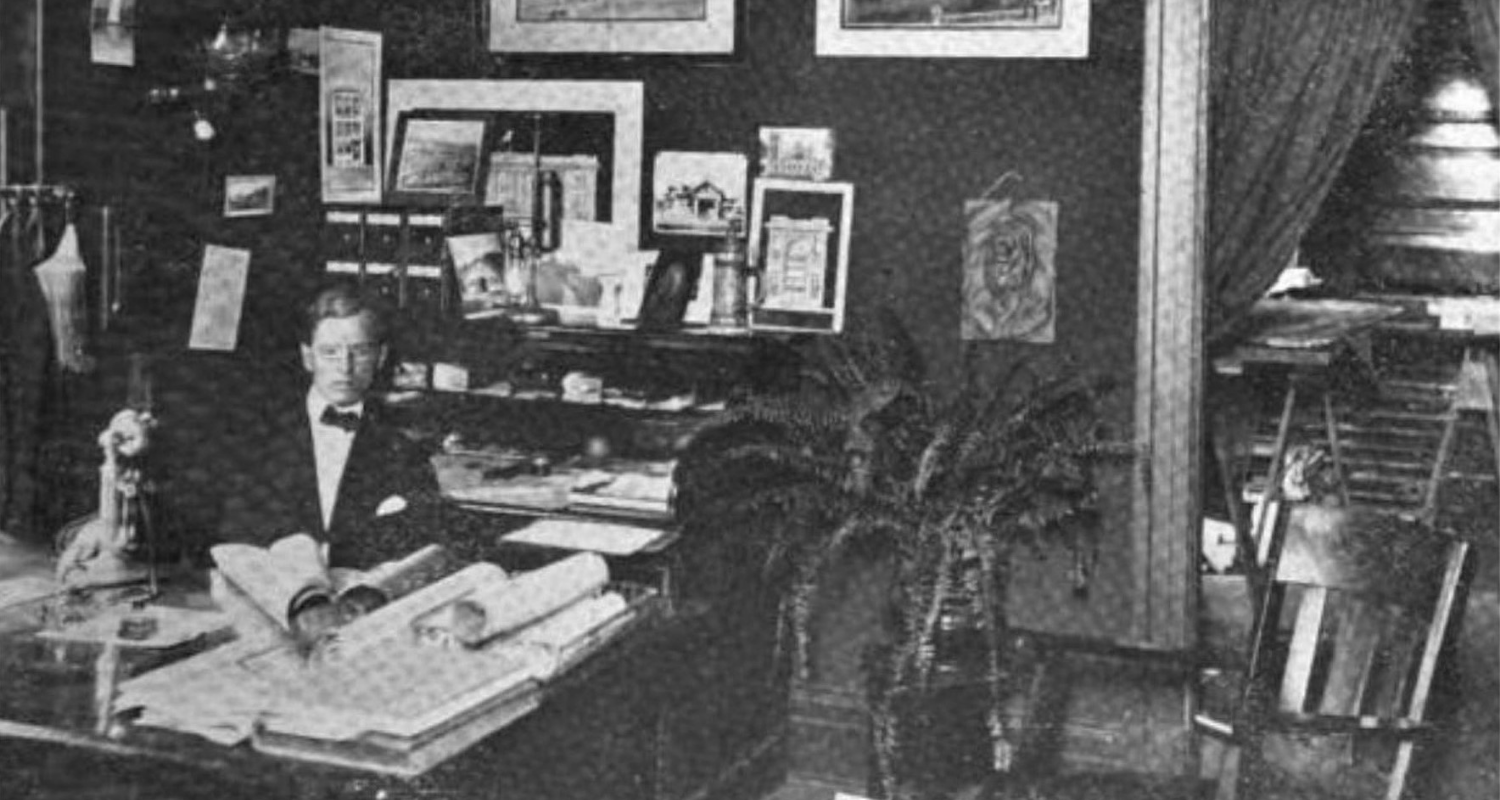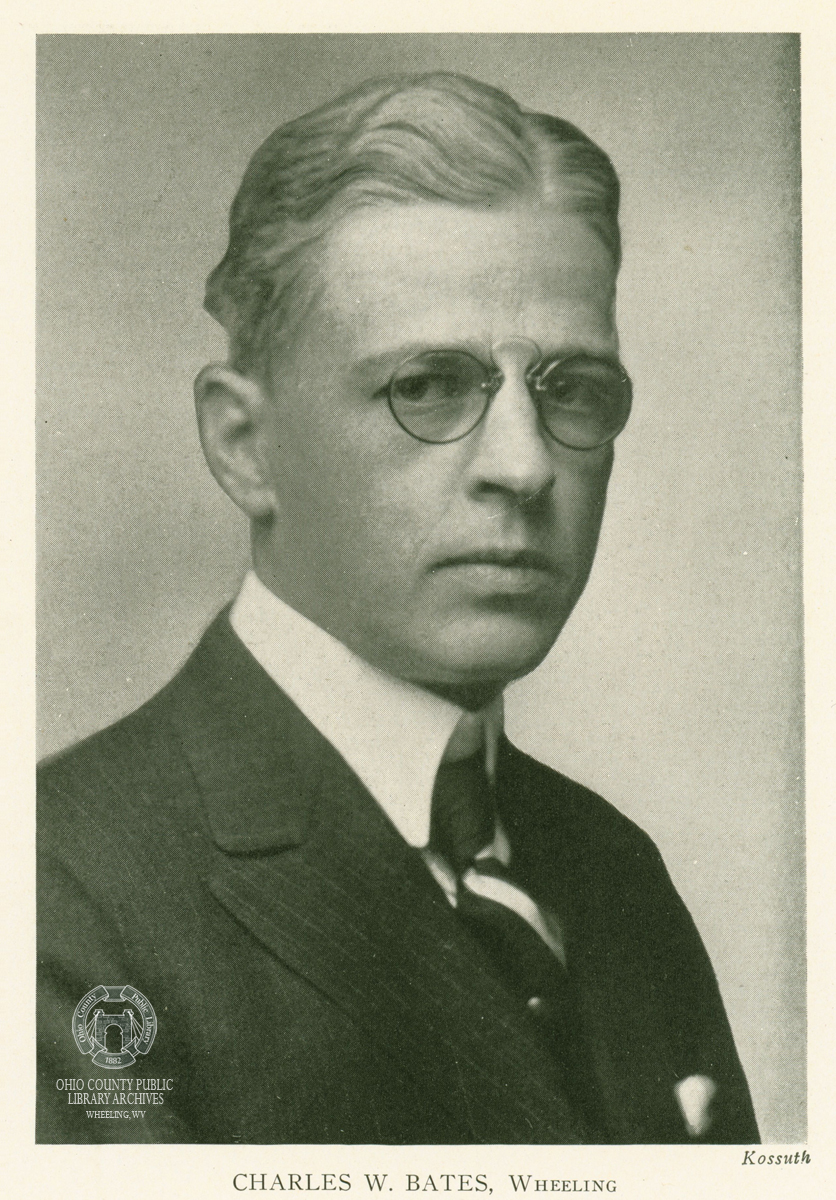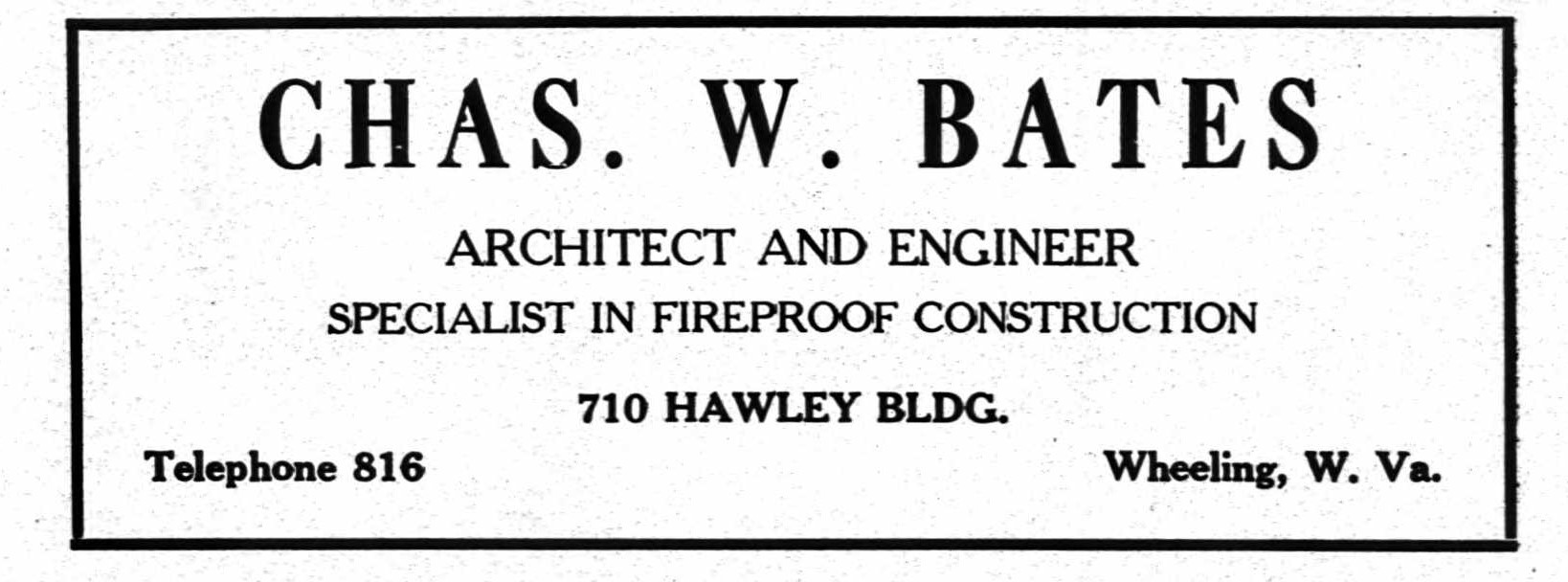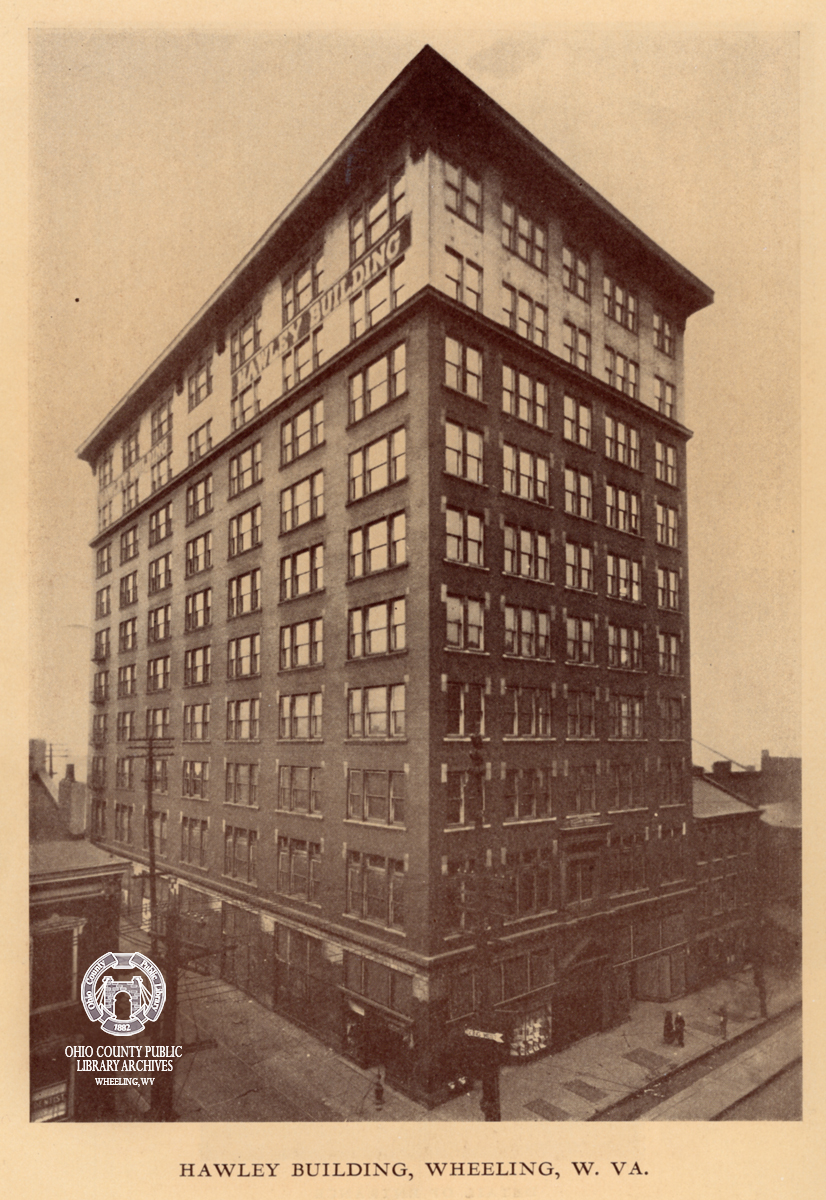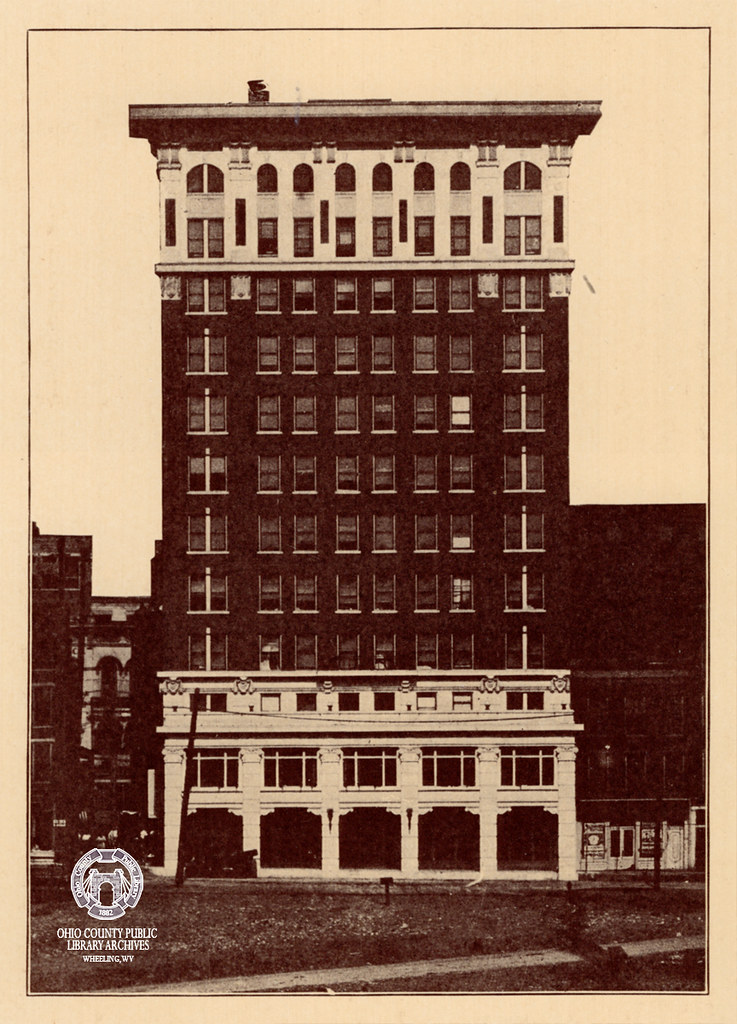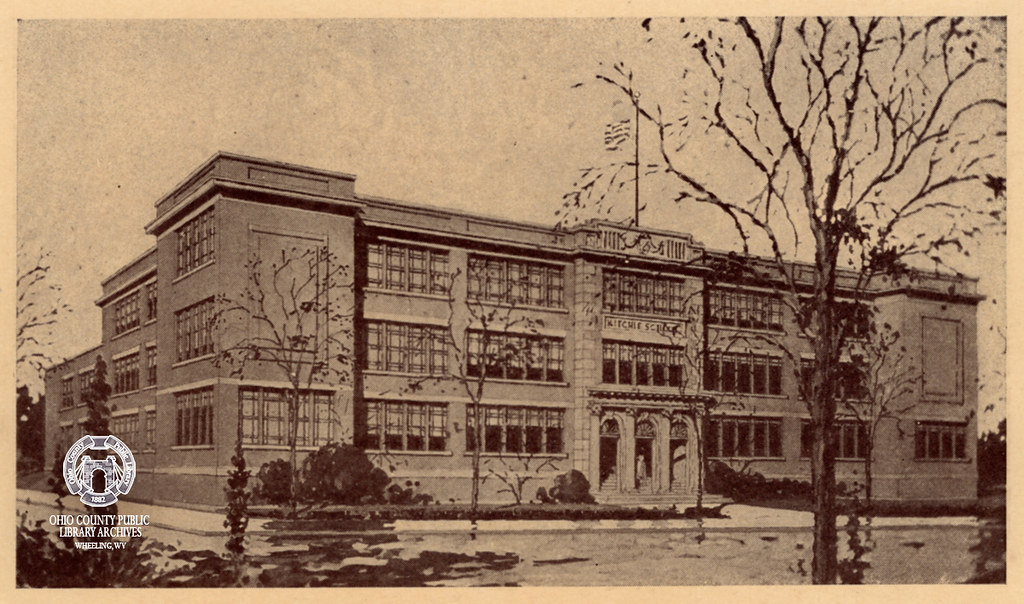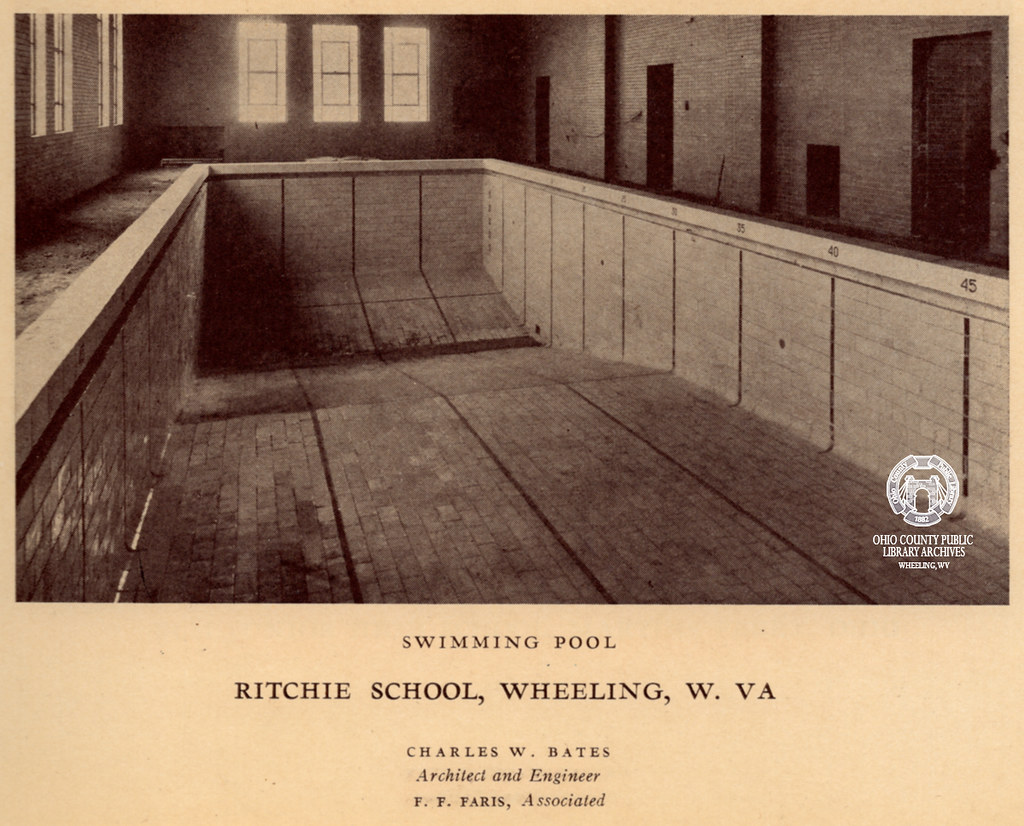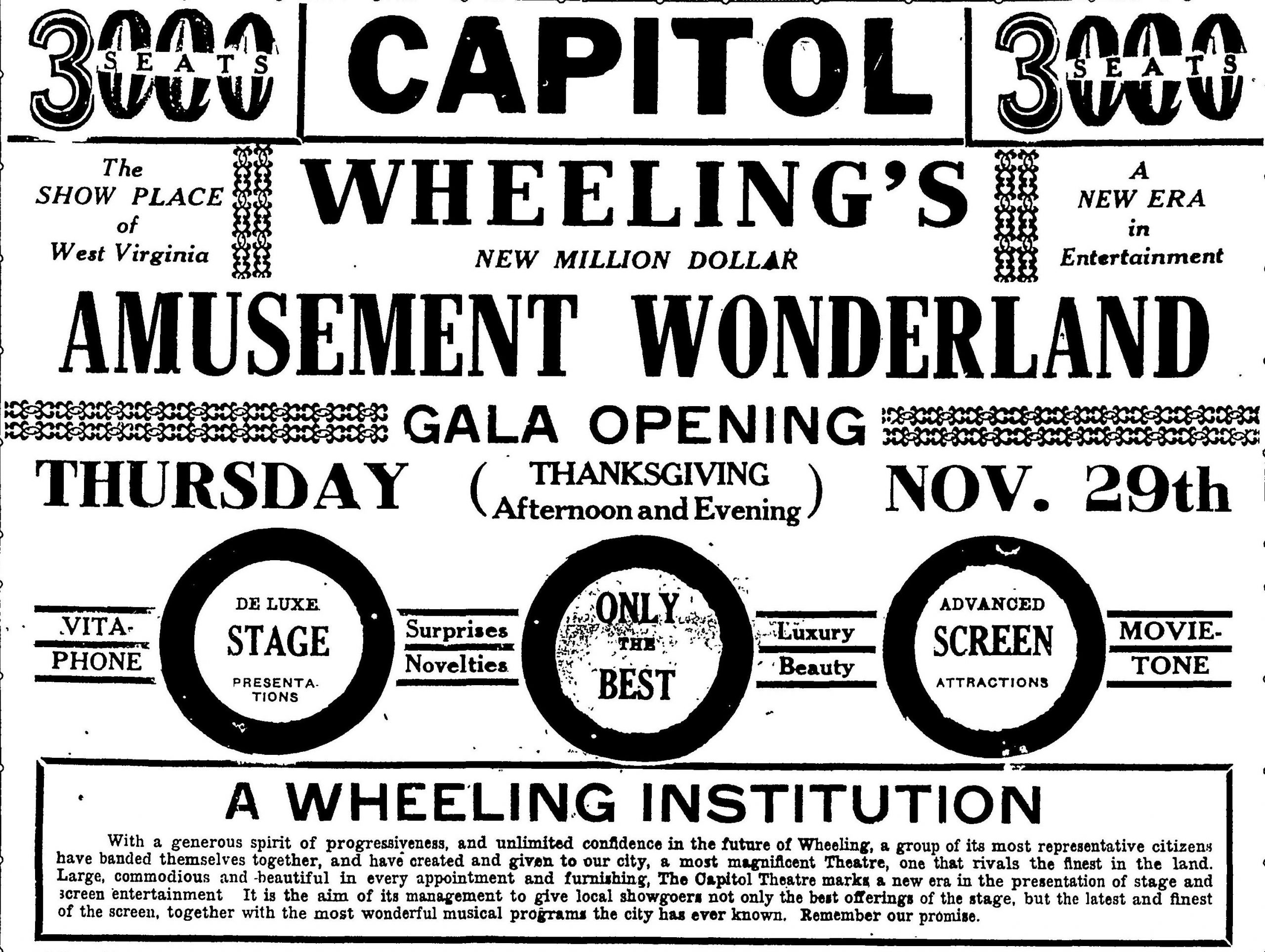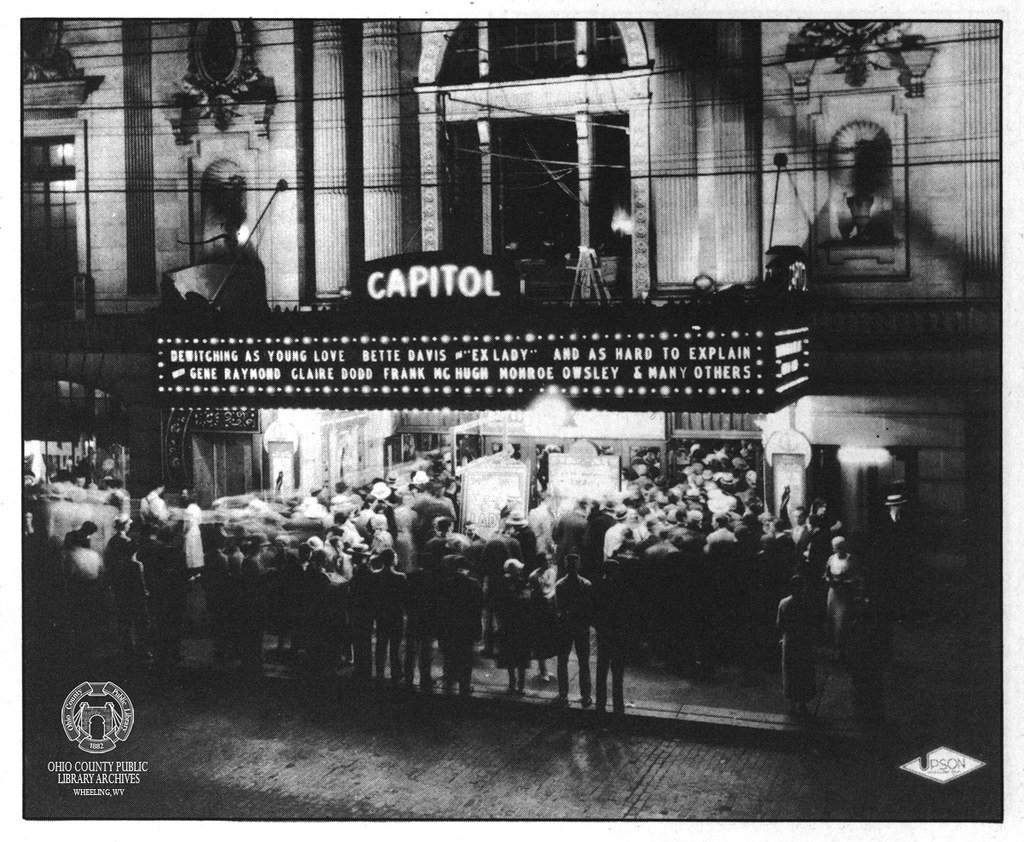What do the Wheeling Clinic, Capitol Theatre, and Twelfth Street Parking Garage have in common? Bricks? Terracotta? Cartouches? Well yes, but in addition, they are three of the many buildings designed by the architect, Charles W. Bates.
Before Charles Winning Bates was one of the giants of Wheeling architecture, he was born to Mrs. Jennie Campbell Bates and her husband, Dr. William J Bates.1 Sources differ on the exact date of Charles Bates’ birth. Biographical sketches note he was born in 1879,2 while his headstone at Greenwood Cemetery says 1880.3 Perhaps being born at the end of the year – December 27 – contributed to this discrepancy.
After going through the Wheeling Public School system, Charles W. Bates graduated from The Linsly School (at the time, the Linsly Military Institute) and went on to study architecture at the Amour Institute (now Illinois Tech) in Chicago. From 1904 to 1910, he divided his time between Chicago and Pittsburgh before returning to Wheeling to establish his architectural practice in 1909. In addition to his home office in Wheeling, he had offices in Youngstown and Cleveland, Ohio, and designed buildings throughout the region.4
“A Business as Well as a Profession”
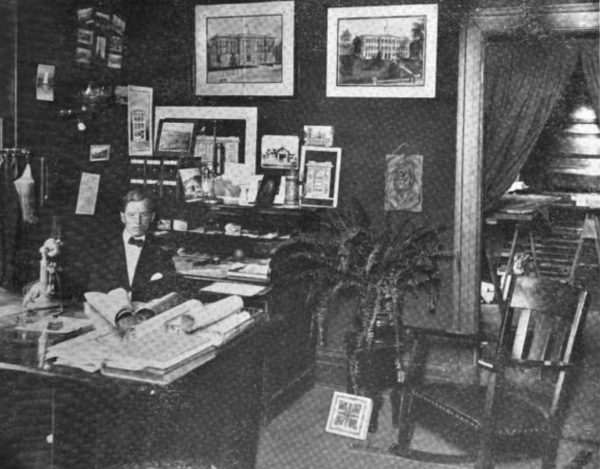
“The practice of Architecture must today be considered a business as well as a profession, requiring a wide experience in all types of buildings, construction, including the numerous mechanical features, finishes, and equipment, and their application to any given building. “5
Beyond examining his buildings, most of what we know about Charles Bates’ professional life comes from the design portfolios he published during his career. In addition to illustrations, floorplans, and photographs of his work, there are brief essays describing what he thought the responsibilities of an architect ought to be. According to Bates, an architect was supposed to be the front line in safeguarding the interest of clients, reducing costs when necessary, and using materials and techniques that would maximize the structural integrity of the building. Many of the buildings he designed are still standing and in use around Wheeling, a testament to his thoughtful approach.
Custom Homes for Friends and Family
Not one to be boxed in by his work designing factories, theaters, and municipal buildings, Bates designed several private homes, including his own at 20 Hawthorne Court.7 These private residences fell into two distinct styles: grand, rectangular, and neo-classically inspired, or low, rambling, Craftsman-style homes.
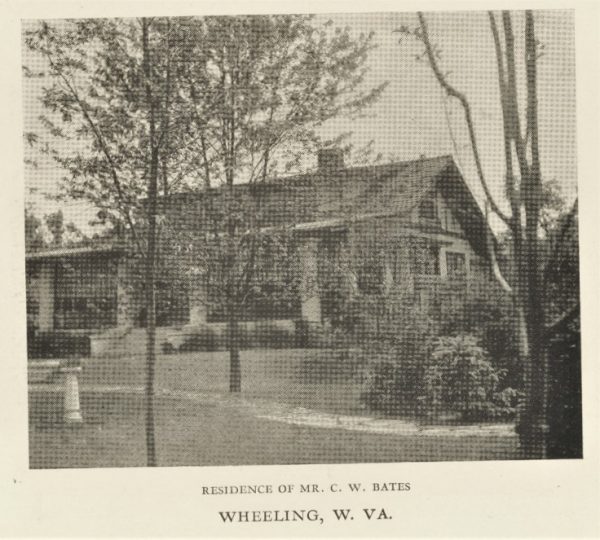
Do you recognize any of the homes shown below? Before the Stifel Arts Center was a hub of arts and culture for the public, it was simply “Edemar,” the private residence of E.W. Stifel.
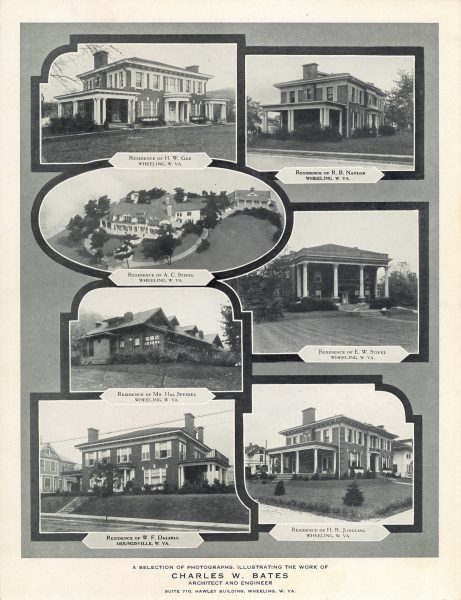
Wheeling’s Million Dollar Theatre
Perhaps Charles W. Bates’ most notable building, The Capitol Theatre, opened with much fanfare on Thanksgiving Day, November 29, 1928. The foundation was designed to accommodate for an additional eight stories to be built, but the plans for the hotel never were acted on.8
Residents of Wheeling got the first glimpses of the Capitol in September of that same year when the construction barrier was finally removed. At the time, The Wheeling Register reported that the general public could finally “be afforded an unobstructed view of the full beauty of this impressive structure– a building of which Wheeling can be well proud.” 9
The paper lavished compliments on Bates’ design, remarking that the front of the theater was “not only imposing and artistic, but typifies an air of refinement that is only too seldom carried out in the building of theatres” Corinthian columns, arched window over the entrance and terra-cotta glazed cladding on the facade of this theater reflected a “most modest” style of architecture,10 which rings true about Bates’ other works as well.
The Legacy of Charles W. Bates
Unfortunately, just three years after the opening of the Capitol Theatre and three days prior to his twenty-first wedding anniversary, Charles W. Bates died suddenly en route to Cleveland Clinic.12 He was just 51 years old. His sudden death was a shock to his friends and family, and this loss was felt across Wheeling. It seems fitting that the Capitol Theatre, still the largest and grandest theatre in West Virginia, is one of the last buildings he designed.
• Kate Wietor is currently studying Architectural History and Historic Preservation at the University of Virginia in Charlottesville, Virginia. She spent one glorious year in Wheeling serving as the 2021-22 AmeriCorps member at Wheeling Heritage. Since moving back to Virginia, she’s still looking for an antique store that rivals Sibs.
References
1“Obituary: Charles W. Bates.” Ohio County Public Library. Accessed January 5 2022. From https://www.ohiocountylibrary.org/wheeling-history/5891
2“Charles W. Bates.” Ohio County Public Library. Accessed January 5, 2022. From https://www.ohiocountylibrary.org/history/5890
3Find a Grave Memorial Page. “Charles Winning Bates” From https://www.findagrave.com/memorial/108420156/charles-winning-bates
4Ibid.
5“Charles W. Bates.” Ohio County Public Library. Accessed January 5, 2022. From https://www.ohiocountylibrary.org/history/5890
6“Photographs Illustrating Works of Charles W. Bates and William H. Cook, Architects and Engineers.” Ohio County Library Special Collections
7“Windsor Hotel.” Ohio County Public Library. Accessed January 5, 2022. From https://www.ohiocountylibrary.org/wheeling-history/5352
8“Photographs Illustrating Works of Charles W. Bates and William H. Cook, Architects and Engineers.” Ohio County Library Special Collections
9The Wheeling Intelligencer, November 27, 1928
10The Wheeling Register, September 9, 1928
11Ibid.


